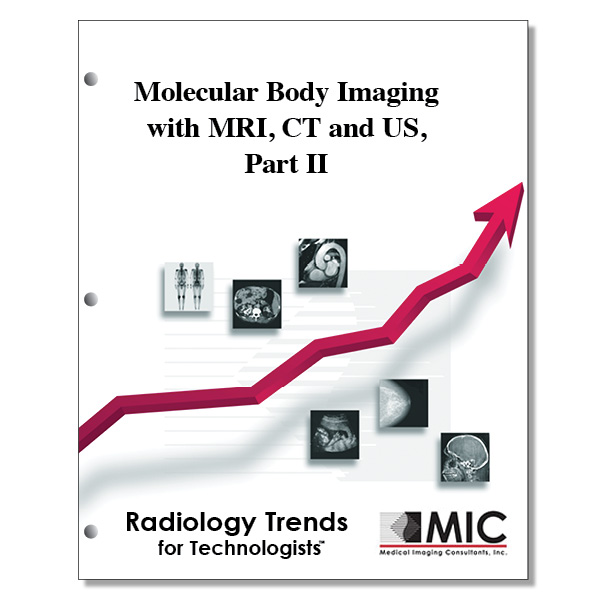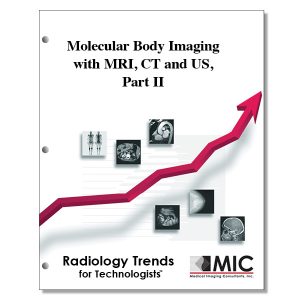

Molecular Body Imaging with MRI, CT and US, Part II
Emerging molecular imaging applications with MRI, CT, and US are presented.
Course ID: Q00341 Category: Radiology Trends for Technologists Modalities: CT, MRI, Nuclear Medicine, Radiation Therapy, Sonography3.5 |
Satisfaction Guarantee |
$37.00
- Targeted CE
- Outline
- Objectives
This course has been approved for 3.5 Category A credits.
No discipline specific Targeted CE credit is currently offered by this course.
Outline
- Introduction
- Applications of Molecular and Cellular MR Imaging
- Oncology
- Cardiovascular Application
- Inflammation
- Metabolic Imaging
- Cell Tracking
- Applications of Molecular CT Imaging
- Applications of Molecular US Imaging
- Imaging of Inflammation
- Imaging of Thrombus Formation
- Imaging of Tumor Angiogenesis
- Steps toward Clinical Translation of Molecular US Imaging
- Outlook
Objectives
Upon completion of this course, students will:
- recognize the most commonly used cross-sectional diagnostic imaging techniques
- identify the mechanisms of molecular MR imaging
- understand the fundamentals of diffusion-weighted MR imaging
- identify the characteristics of ultrasmall superparamagnetic iron oxide particles
- learn the properties of integrins
- identify which imaging modalities use integrins as molecular imaging targets
- understand the process of tumor cell marker imaging
- become familiar with the history of antibody research
- understand the process of hybridoma creation
- become familiar with techniques for antibody-based radionuclide imaging
- become familiar with techniques for antibody-based radionuclide therapy
- identify targets of molecular MR imaging of the cardiovascular system
- recognize the usefulness of molecular MR imaging with avb3 integrin
- identify the various hyperpolarized agents used for MR metabolic imaging
- identify cyclotron-produced PET radionuclides
- identify PET radiopharmaceuticals used for imaging prostate cancer
- recognize the drawbacks of PET imaging of metabolites
- recognize the barriers to cell tracking with gadolinium-based MR contrast agents
- understand the image effect caused by SPIO nanoparticles
- identify the cell types that demonstrate uptake of unmodified SPIO nanoparticles
- recognize the benefits of using fluorine-19 for cell tracking with MR imaging
- identify the targets of nuclear medicine-based cell tracking
- understand the process of labeling cells with radioisotopes
- recognize the FDA-approved processes for labeling cells with radioisotopes
- identify potential molecular CT contrast agents
- understand the obstacles to molecular CT imaging
- identify the concentration of gadolinium-based contrast agents required for MR imaging
- identify the modality that can image individual molecular contrast agent particles
- identify the modalities that can use vascular cell adhesion molecule-1 as a molecular target
- understand the applications of VCAM-1–targeted US microbubbles
- understand the applications of P-selectin–targeted US microbubbles
- identify the modalities that can use avb3 integrin as a molecular target
- recognize the benefits of US that promote its use in treatment response monitoring
- identify the challenges preventing MR, CT and US from becoming molecular imaging techniques
- identify the imaging modality with the highest sensitivity for detection of contrast agents
- identify methods for increasing sensitivity for molecular MR imaging
- identify methods for increasing sensitivity for molecular CT imaging
- understand the greatest challenge for the molecular imaging community
- become familiar with the process for bringing a new imaging agent to market
- understand the effect of creating less-specific molecular contrast agents
